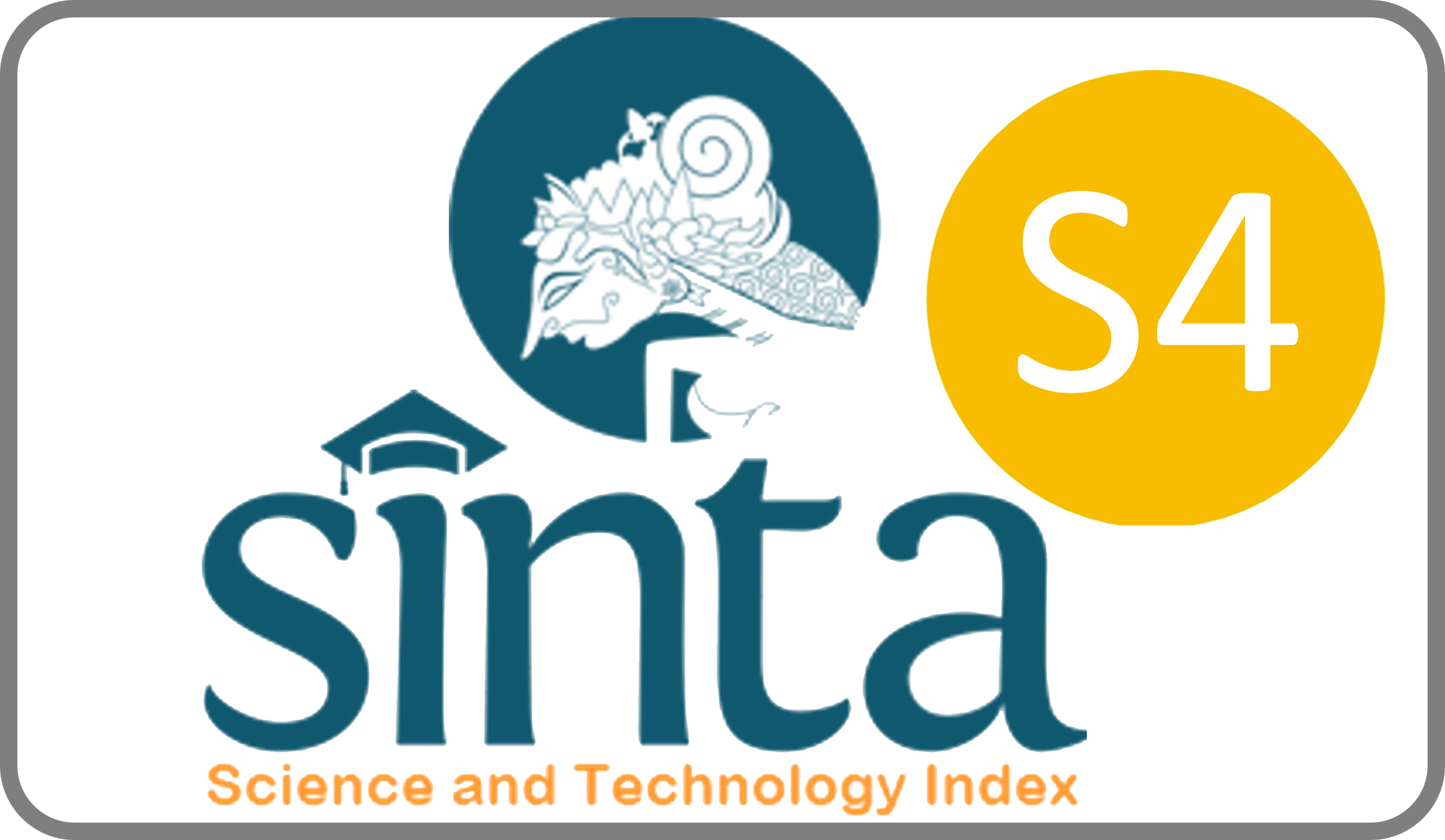THE INTEGRATION OF COMPUTATIONAL CHEMISTRY TO SUPPORT INTERACTIVE LEARNING MEDIA FOR SENIOR HIGHSCHOOL: AN INNOVATIVE STRATEGY TO IMPLEMENT ‘KURIKULUM MERDEKA’
Downloads
Simulation or chemical modeling with computers is a major topic in computational chemistry. This subject is not covered in high school material, however, this method can be applied to support a more interactive learning process. Computational chemistry can be used as a virtual teaching aid and can also be used to help explain or predict chemical reactivity. The aim of this Community Service is to improve teachers' understanding of computational chemistry, both in theory and practice, according to the curriculum. The training activities were conducted using two methods: Lectures and practical sessions. Avogadro 1.2.0 and MOPAC2016 software were used for this training. The outcome of this program were evaluated using quantitative and qualitative analysis. The sustainability of the program was analyzed from the assignments regarding the plan to integrate the material provided into the learning process at schools. Based on the evaluation results, participants felt that the training they had received met their teaching needs. After participating in this training, the participants had various ideas for integrating computational chemistry into learning activities.
Fikri, A. A., Fadlika, I., Ardiansyah, H., & Sekarsari, B. A. 2021. "Pelatihan Aplikasi Avogadro Untuk Meningkatkan Pehamaman Dan Minat Siswa Dalam Bidang Kimia Di SMA 10 Malang [Avogadro Application Training to Improve Students' Understanding and Interest in Chemistry at SMA 10 Malang]." Jurnal Pengabdian, Pendidikan, dan Teknologi, 2(2): 6.
Goh, G. B., Hodas, N. O., & Vishnu, A. 2017. “Deep learning for computational chemistry". Journal of computational chemistry 38(16): 1291-1307.
Hanwell, M. D., Curtis, D. E., Lonie, D. C., Vandermeersch, T., Zurek, E., & Hutchison, G. R. (2012). Avogadro: an advanced semantic chemical editor, visualization, and analysis platform. Journal of cheminformatics, 4, 1-17.
Kuroki, N., Mochizuki, Y., & Mori, H. 2023. “Practical Computational Chemistry Course for a Comprehensive Understanding of Organic, Inorganic, and Physical Chemistry: From Molecular Interactions to Chemical Reactions“. Journal of Chemical Education 100(2): 647-654.
Lewars, E. G. 2011. Computational chemistry. Introduction to the theory and applications of molecular and quantum mechanics. New York: Springer.
Marwan, A. G., & Nugraha, A. W. 2022. “Pengembangan Media Pembelajaran Menggunakan Metode Komputasi pada Sub Pokok Bahasan Haloalkana di SMA. Humantech [Development of Learning Media Using Computational Methods on Haloalkane Sub-Topics in High School. Humantech]”. Jurnal Ilmiah Multidisiplin Indonesia, 1(7): 927-934.
Maahury, M. F., Sohilait, M. R., & Pada, S. S. 2021. "Pelatihan Penggunaan Software Avogadro untuk Pemodelan Senyawa Hidrokarbon Sederhana kepada Siswa Kelas XI IPA SMA Negeri 5 Maluku Tengah [Training on the Use of Avogadro Software for Modeling Simple Hydrocarbon Compounds for Grade XI Science Students of SMA Negeri 5 Central Maluku]." Jurnal Gema Ngabdi, 3(2): 96-100.
Sunita, Sajid, A., Singh, Y., & Shukla, P. 2020. “Computational tools for modern vaccine development”. Human vaccines & immunotherapeutics, 16(3): 723-735.
Stewart, J. J. P. (2016). MOPAC2016. Stewart Computational Chemistry. http://openmopac.net/.
Wardana, I., Banggali, T., & Husain, H. 2017. “Penerapan model pembelajaran kooperatif tipe student team achivement division (STAD) untuk meningkatkan hasil belajar siswa kelas XI IPA Avogadro SMA Negeri 2 Pangkajene (Studi pada Materi Asam Basa) [Application of the cooperative learning model of the student team achievement division (STAD) type to improve the learning outcomes of class XI IPA Avogadro students of SMA Negeri 2 Pangkajene (Study on Acid Base Material)]”. Jurnal Chemica 18(1): 76-84.
Wijma, H. J., & Janssen, D. B. 2013. “Computational design gains momentum in enzyme catalysis engineering”. The FEBS journal 280(13): 2948-2960.
Yuanita, E., Sudirman, S., Ulfa, M., Dharmayani, N. K. T., Sumarlan, I., & Sudarma, I. M. 2018. “Aplikasi Chemdraw Dan Avogadro Untuk Meningkatkan Pemahaman Dan Minat Dalam Bidang Kimia [Chemdraw And Avogadro Applications To Improve Understanding And Interest In Chemistry]”. Jurnal Pendidikan dan Pengabdian Masyarakat 1(2).
Copyright (c) 2024 Kautsar Ul Haq, Alfinda Novi Kristanti, Hery Suwito, Nanik Siti Aminah, R. Aryabraga Rusdipoetra, Fariz Rizky Alfian, Syarifah Asyura

This work is licensed under a Creative Commons Attribution-ShareAlike 4.0 International License.
JLM by Unair is licensed under a Creative Commons Attribution-ShareAlike 4.0 International License.
1. The journal allows the author to hold the copyright of the article without restrictions.
2. The journal allows the author(s) to retain publishing rights without restrictions
3. The legal formal aspect of journal publication accessibility refers to Creative Commons Attribution Share-Alike (CC BY-SA).
4. The Creative Commons Attribution Share-Alike (CC BY-SA) license allows re-distribution and re-use of a licensed work on the conditions that the creator is appropriately credited and that any derivative work is made available under "the same, similar or a compatible license”. Other than the conditions mentioned above, the editorial board is not responsible for copyright violation.


















